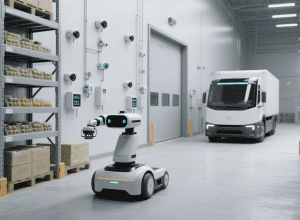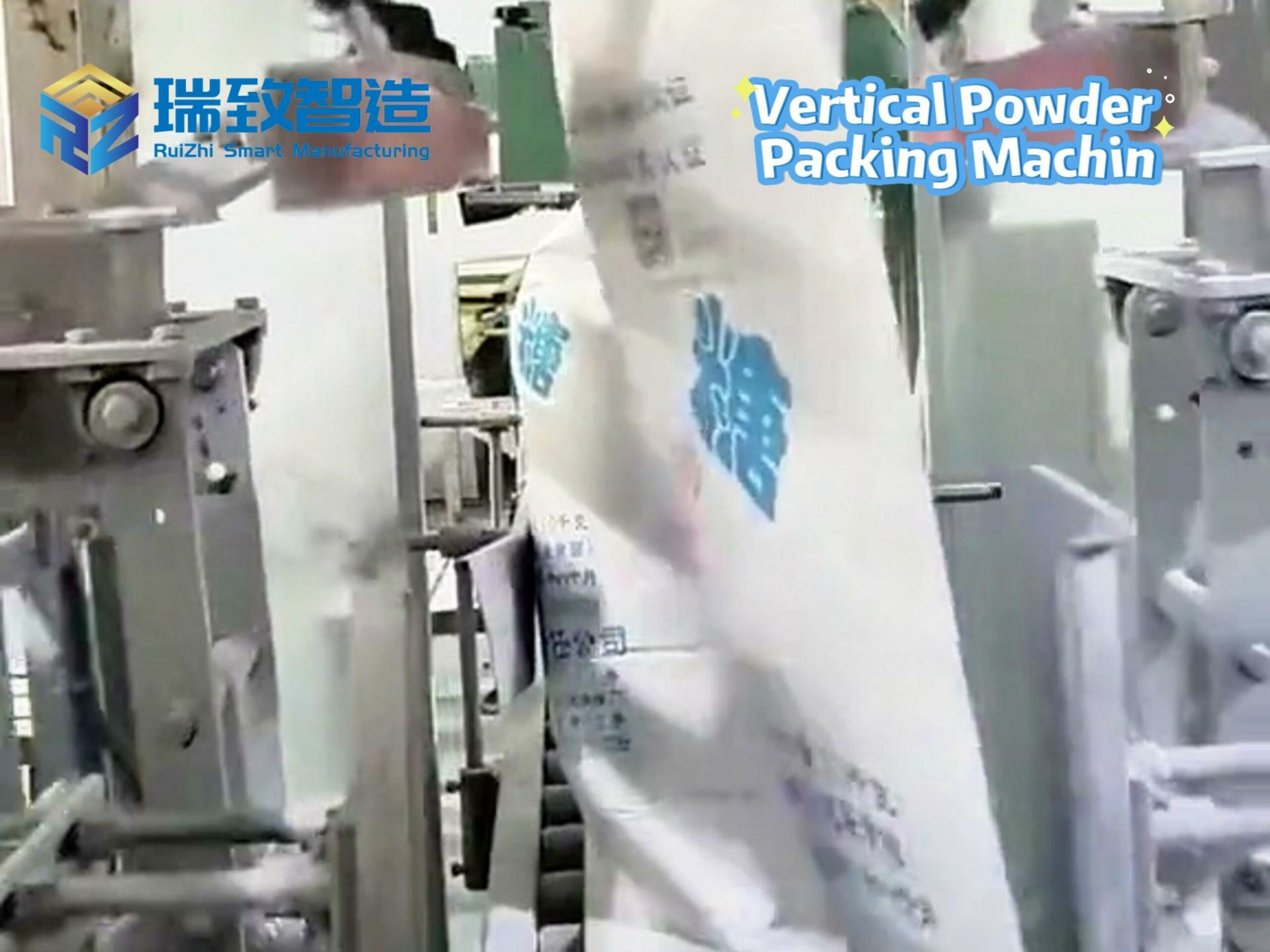De-risking autonomous technology for agriculture

In an era dominated by the rapid advancements of intelligent automation and industrial automation, the agricultural sector stands at a crossroads of transformation. While automation has become a cornerstone of efficiency and innovation in various industries, its adoption in agriculture has been slower than expected, despite the sector’s urgent need for solutions to address mounting challenges. To bridge this gap and give farmers the confidence to embrace new technologies, trials have been carried out to de-risk autonomous technology for agriculture, showcasing its potential to revolutionize efficiency, sustainability, and environmental impact. As the world grapples with the demand for high-quality, low-cost food production while minimizing environmental harm, the exploration of automation equipment and intelligent systems in farming has never been more crucial.
The agricultural industry is under intense pressure to meet the growing global food demand while reducing its environmental footprint. Industrial automation has proven to be a game-changer in other sectors, but in agriculture, the hesitation to invest in automation technologies persists, despite the manufacturing sector’s increasing reliance on such advancements. Recognizing the significant opportunities that automation presents for enhancing efficiency and quality in agriculture, a partnership between the University of Sheffield Advanced Manufacturing Research Centre (AMRC) Cymru and Grŵp Llandrillo Menai’s agricultural campus, Glynllifon, set out to de-risk these promising opportunities.
Among the myriad challenges faced by the agricultural sector, labour shortages and inconsistent operations stand out as major hurdles. To address key questions about the real-world benefits of automating in-field operations, particularly in grassland management, the partnership turned to AMRC Cymru’s in-field autonomous tractor – AgBot, which was funded by the Welsh government. Through two comprehensive field-level trials, the team aimed to provide an evidence-based evaluation of autonomous technology in agriculture, highlighting both its advantages and disadvantages. This approach was designed to empower farmers with a deeper understanding of how intelligent automation could impact efficiency, practical use, sustainability, and the environment.
They also sought to raise awareness of autonomous farming technologies and their potential applications, sparking curiosity and increasing interest in automation within the Welsh grassland and livestock agriculture sector. By doing so, they hoped to foster greater collaboration between end users, technology developers, and academic and research organizations, creating opportunities for future innovation and development.
For Alex Lewis, Manufacturing Engineering Lead at AMRC Cymru, the RASART project represents a significant milestone in understanding the real-world potential of autonomous systems within UK agriculture. “While the trials importantly highlighted areas for future development, the evidence-based evaluation provided valuable insights into the advantages and disadvantages of automation for both today and looking to the future,” he said. “Ultimately, this empowers farmers with a deeper understanding of its potential impact on efficiency and sustainability.”
Both trials focused on two common grassland operations: mowing and cultivating. These tasks were executed by three tractors with varying levels of automation: fully autonomous, semi-autonomous, and fully manual. The Fendt Vario 516 tractor was selected for the semi-autonomous trial at the Glynllifon campus in Caernarfon due to its similar size and technical specifications to the AgBot, which was guided by GPS.
While the AgBot was slower for some operations, its autonomous nature means that time constraints are less of an issue. Since it doesn’t require an operator, farmers can use the time it takes to complete tasks on other important activities. The AgBot’s ability to work continuously for up to approximately 24 hours before refueling, without the need for human labor, makes it an invaluable asset for tasks like soil cultivation.
Manual tractors, on the other hand, are limited by the constant need for operator attention, as well as human fatigue and working hours, which can significantly hinder productivity. In contrast, automating routine tasks with GPS-guided tractors and autonomous equipment like the AgBot creates a more ergonomic and less demanding working environment for operators.
In high-speed operations such as mowing, the AgBot may not match the working rate of traditional systems. However, for slower tasks like harrowing that fall within its speed limits, it performs comparably well, with lower fuel consumption and reduced CO2 emissions. Although manual tractors were marginally faster in some cases, the actual time saved by using the AgBot can be calculated as ‘saved time = time taken by a manual driver – AgBot set up time’, as the operator is free to focus on more complex tasks while the AgBot works.
Martin Jardine, Director of Agri Food at Grŵp Llandrillo Menai, was encouraged by the trial results. “The RASART trials offer verified data as to the great potential automation has to support with increasing on-farm productivity and efficiency,” he noted. “Through further trials and similar research, the AMRC and Glynllifon teams will be able to transfer knowledge to regional farms to help them make informed decisions based on the findings of robust, applied research.”
While the AgBot requires a significant upfront investment, its autonomous operation reduces the long-term need for human labor, leading to substantial cost savings over time. In contrast, traditional tractors, even with GPS-guidance, rely on human operators and incur higher labor costs. Over a ten-year period, the AgBot can save roughly £140,000 compared to a manual tractor and £120,000 compared to a semi-autonomous tractor, making it a cost-effective solution in the long run.
These trials provided a tangible demonstration of the capabilities of autonomous systems in agriculture. They not only highlighted the potential benefits such as labor savings and increased accuracy in field operations for farms in Wales and across the UK but also identified areas that require further development to ensure these systems are fully practical and beneficial, especially in grassland-based livestock farming systems.
As the agricultural industry continues to evolve, the integration of intelligent automation and advanced automation equipment is no longer a luxury but a necessity. These autonomous systems have the potential to collect vast amounts of data, offering invaluable insights that can optimize the use of external inputs such as fertilizers, seeds, and pesticides. This, in turn, enables farmers to make more informed, profitable decisions. The successful implementation of such technologies will not only enhance the efficiency and sustainability of farming but also position the agricultural sector to meet the ever-growing food demand and overcome the associated challenges.
The team at AMRC Cymru is actively working on improving autonomous solutions like the AgBot, focusing on areas such as object detection and making the implements it uses, like cultivators, “smart” to enable real-time problem reporting. They are also exploring how additional data sources, such as environmental and satellite data, can further support farming operations.
The partnership with Grŵp Llandrillo Menai will continue until June 2026, providing ample opportunity to test potential improvements and conduct further field operations using different equipment and attachments. The AgBot will be prominently showcased at agricultural events and demonstrated to both agriculture students and farmers, aiming to raise awareness and generate more interest in this innovative technology and its wide-ranging applications in grassland-based livestock farming systems. In the grand tapestry of the agricultural revolution, the de-risking of autonomous technology marks a pivotal thread, weaving together intelligent automation, industrial innovation, and sustainable farming practices. As these efforts continue to unfold, the future of agriculture looks brighter than ever, with automation equipment and advanced systems poised to lead the way towards a more productive, efficient, and environmentally friendly farming landscape.




















